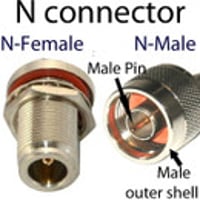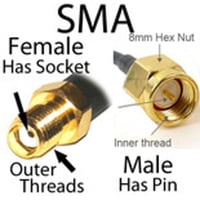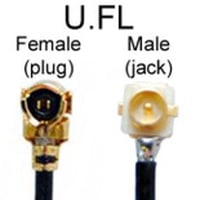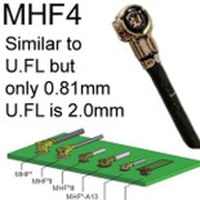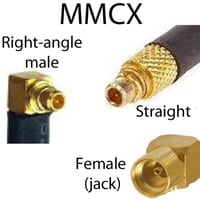U.FL to N Cables
U.FL to Type N Connector Antenna Cables
SEE LIST OF ARTICLES ABOUT U.FL CABLES AND CONNECTORS
U.FL antenna cables connect antennae to U.FL jacks on mounted on PCB boards. The combination of N-type connectors with U.FL create a convenient adapter cable to connect a medium or large-sized external antenna to a PCB. These cables are often used for a broad range of Internet of Things (IOT) applications where they used to for longer-range wireless to connect to a LAN or other source of internet connectivity.
All of our U.FL to N antenna cables are impedance-matched to 50 Ohms, which is the standard for WiFi and almost all typical wireless applications, including Bluetooth, LTE (4G), GSM (3G), ZigBee, and LoRa. Our antenna cables consistently low broadband VSWR have made them popular over the years in all of these applications.
The three types of coax that we use for U.FL cables are all impedance match to 50 Ohms.
We typically make U.FL to N cables with 1.13mm coax, which is a very thin and flexible cable, with a black jacket. While 1.13 coax is not the low-loss option, it is often very important to use this very thin and flexible coax for two reasons:
- In tight spaces (inside of cases and enclosures), such a thin coax is often necessary. Sometimes limited size of ports, requires the use of 1.13 coax.
- 1.13 enables the U.FL connector to snap down securely on the jack without popping off (as will sometimes happen with RG174, unless you glue the connector to the jack).
We can make special orders of U.FL cables with 1.32mm coax or RG174 (both of which are lower signal loss options) or 1.13mm cable, for better flexibility. 1.32mm is very thin and flexible, like 1.13 coax.
All three of these coaxial cable types have a central wire (insulated by plastic) to conduct the RF signal, further surrounded by a braided mesh, shielding the conducting wire from electromagnetic interference. The double-shielded 1.32mm also includes a second , outer insulating layer that covers the conducting shield. The double-shielded design provides extremely efficient data transmission and where appropriately connected to an antenna the RF signal can be transmitted with minimal signal loss.
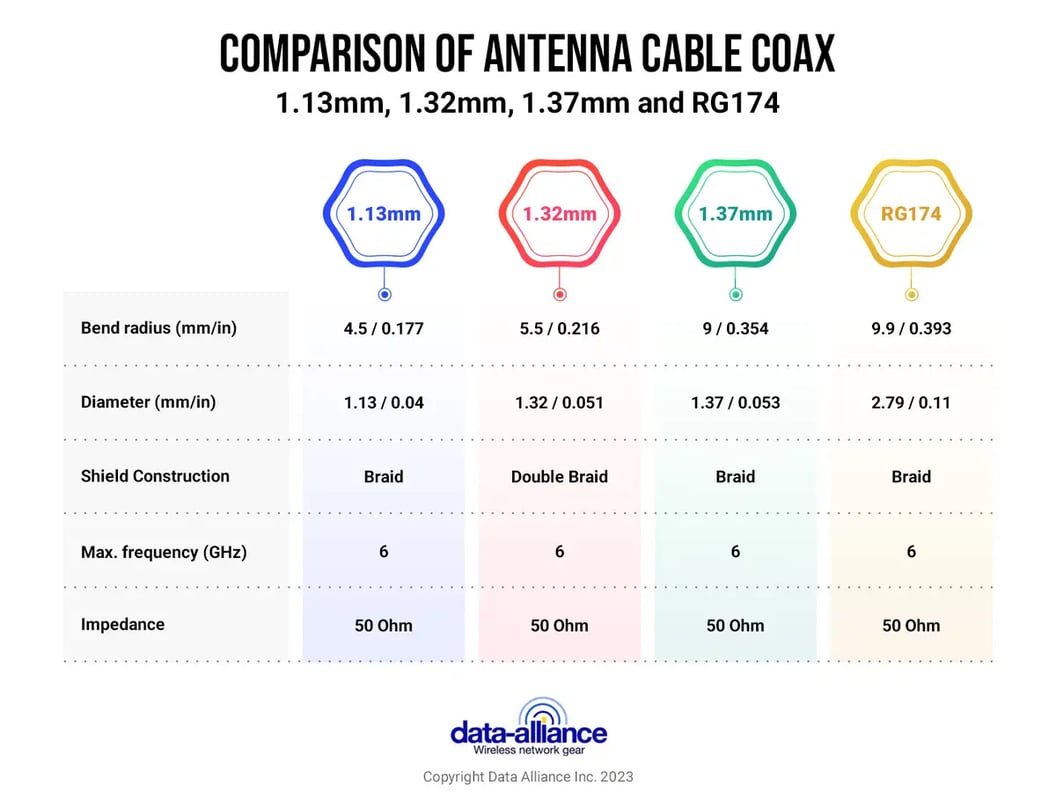
Type-N Connectors are nickle-plated brass for the best protion against corrosion and rust. Our N-female connectors have an O-ring for high intrustion protection.
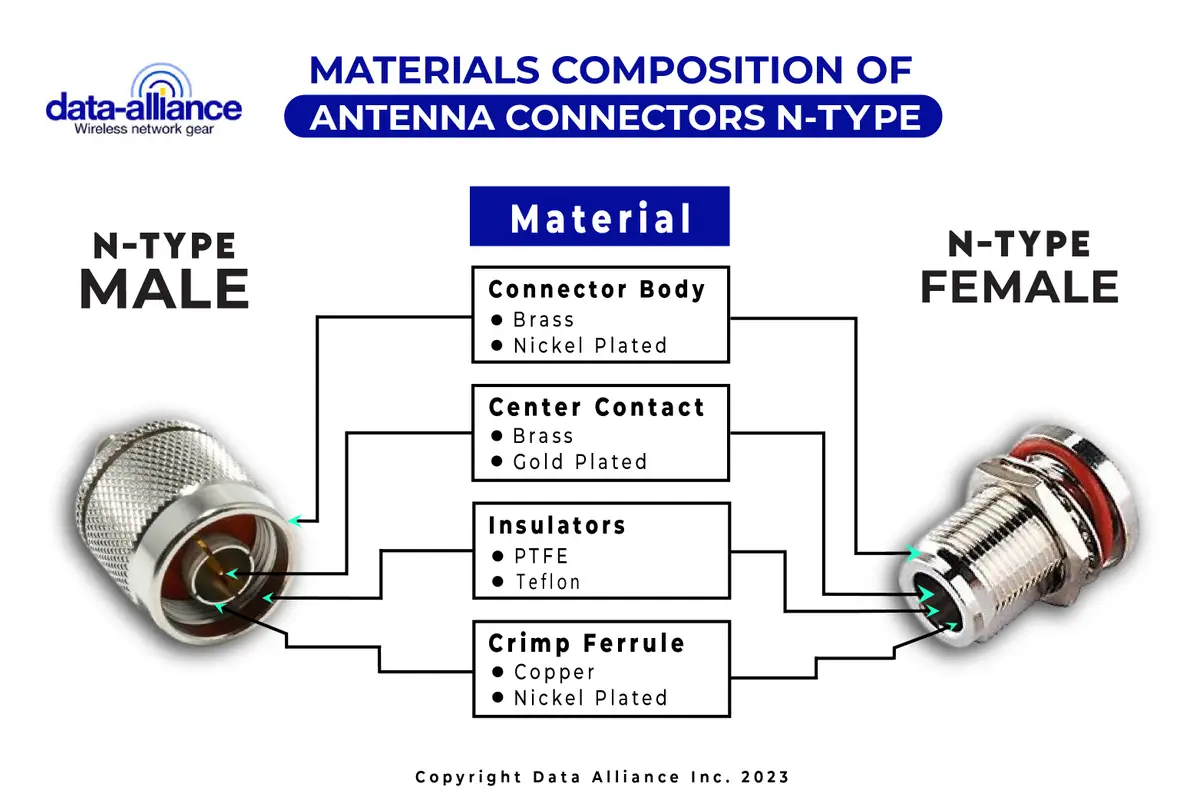
The U.FL female right-angle connector mates with U.FL jack/cable-connector U.FL-LP-66, found on Bluetooth devices, ZigBee / XBee radios, and mini-PCI wireless cards.
Our U.FL connectors are precision machined and gold-plated for low loss.
- Lead-free and ROHS compliant: The entire product is ROHS compliant (connectors and cable).
The U.FL to N-type connector cable is particularly useful for connecting an external antenna to a wireless card or board. It grants the utility of the N-type connector, a mid-sized threaded connector able to carry microwave signals to the far smaller U.FL connector, an Ultra-Miniature coax connector (UMCC), typically embedded in mini-PCI wireless cards. This enables the connection of larger and powerful antennae, which typically possess an N-type connector, to a WiFi set-up via the U.FL connection.
- They transmit Radio Frequency (RF) signals to or from the antenna.
U.FL connectors / Antenna cables w/ U.FL connectors
The Hirose U.FL connector is a type of radio frequency (RF) connector used to connect coaxial cables. It is the smallest RF connector on the market.
- U.FL (sometimes called UMCC) is rated up to 6Ghz.
A U.FL connection stands only 2.5mm high when mated. The small profile and right-angle joint make it ideal for applications where space is at a premium - FOR EXAMPLE: to connect a WiFi antenna to a miniPCI card inside a slimline laptop.
- A U.FL cable may also connect to a GPS antenna or a Bluetooth Beacon.
Befitting a part that might end up in the chassis of a laptop, this connection is meant to stay put when mated. Snapping and unsnapping it several times will cause the female connector to wear out. It would then need to be replaced, along with the attached coaxial cable.
The male connector is usually soldered directly onto the circuit board as the jack: The jack is small enough to take up as little as 9mm x 9mm of space. The female connector snaps onto the male connector, secured by pressure from the metal snap structure.
A U.FL cable is typically a double-shielded 1.32mm coax. To fit in tight spaces, a thin and flexible 1.13mm coaxial cable may also be used. The largest antenna cable to feature U.FL is the 3mm RG174. Thicker but still flexible, the RG174 coax is not double-shielded and delivers less signal loss than its 1.32mm or 1.13mm counterparts.
The small size of U.FL and MMCX connectors has made them an excellent fit in Internet of Things (IoT) applications since they take up very little space in the cramped cases of small devices, such as Bluetooth beacons.

